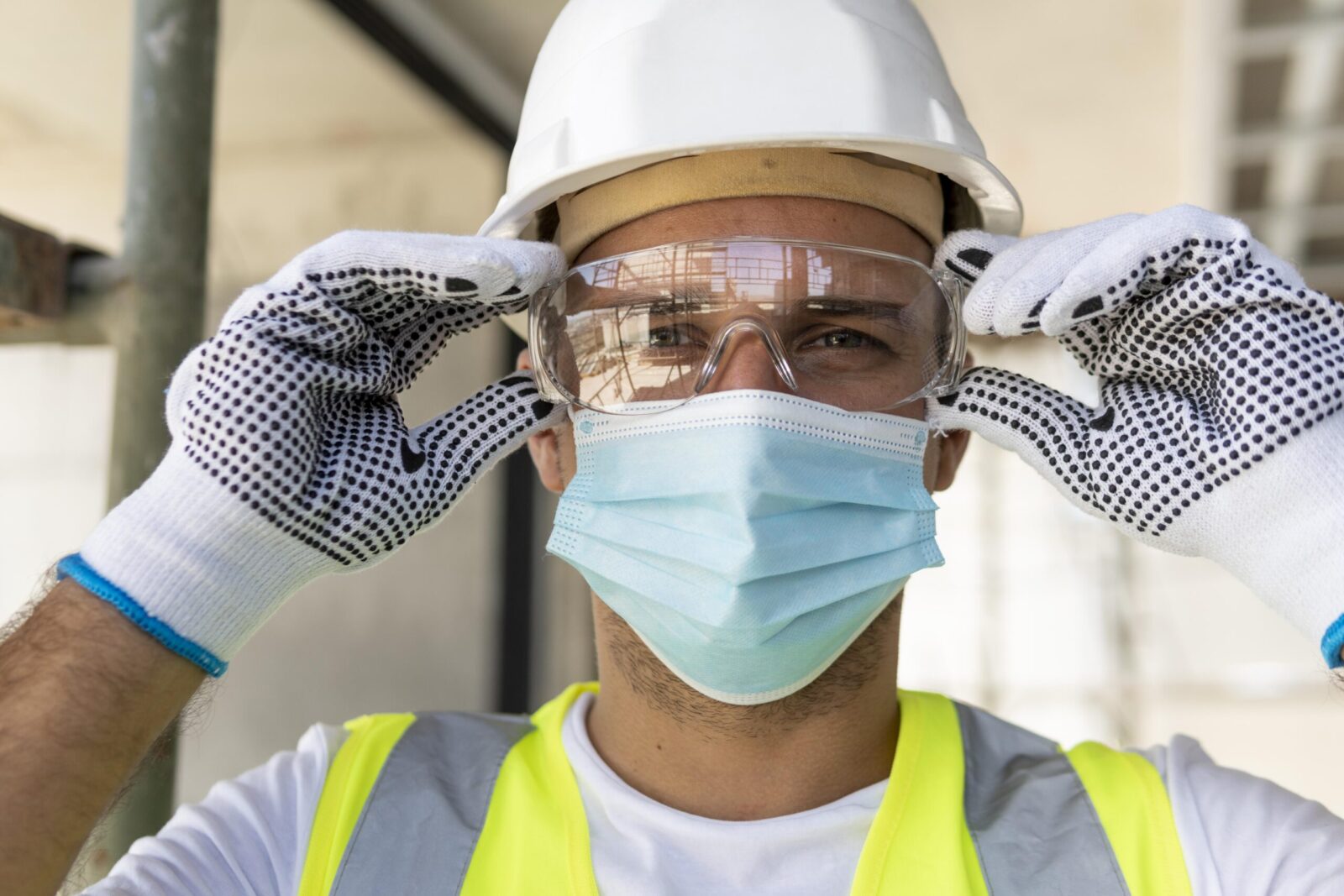
Essential PPE in the Food Industry: What You Need to Know
Overwhelmed by PPE options for food safety? Master your PPE selection for food workers safety with these practical tips.

Get 20€ off on your first order!
Choosing the right hard hat or safety helmet is a key step in ensuring workplace safety, and this guide is here to make the process simple.
With clear insights into the types, features, and industry applications, you’ll gain all the knowledge you need to confidently select the best headgear for your needs.
Our expertise ensures you’ll understand every detail, from material choices to proper sizing and fit. Once you’ve mastered selecting protective headgear, we’ll also help you explore complementary safety equipment to elevate workplace protection even further. Dive in and discover solutions tailored to your needs!
Hard hats and safety helmets, often referred to as construction helmets or protective helmets, differ in their design and intended applications.
Hard hats typically feature a rigid shell and a suspension system that absorbs impact energy from falling objects, making them ideal for general construction.
Safety helmets, on the other hand, include additional safety features like chin straps, integrated visors, and enhanced impact resistance, offering comprehensive protection in demanding environments.
While they share a common purpose of protecting against head injuries caused by falling objects, electrical shocks, and impacts, their designs are optimized for different scenarios.
Learn more in Hard Hats vs. Safety Helmets: What’s the Difference?.
Choosing the correct type is essential for meeting safety standards and ensuring worker comfort. Choosing the appropriate type is essential for maintaining safety and compliance with regulations, ensuring effective protection and injury prevention. Headgear typically falls into these categories:
Choosing the correct type ensures adequate protection and enhances user comfort, promoting overall safety. For detailed insights, read Classifications of Hard Hats.
When selecting protective headgear, focus on these aspects:
The right combination of features ensures both safety and usability. Visit Safety Helmet Classification and Types for more details.

Hard hats and safety helmets are indispensable across industries. Proper use and selection support compliance and foster a safer work environment. Here’s a breakdown:
| Industry | Primary Use |
| Construction | Falling objects and site challenges |
| Manufacturing | Machine operation and material handling |
| Warehousing | Overhead storage and logistics |
| Logistics | Loading/unloading vehicles |
Learn more about industry-specific use cases in Safety Helmet vs. Hard Hat.
A proper fit ensures maximum protection and comfort. Accurate sizing reduces the risk of helmets shifting or falling off during use. Measure your head circumference in centimeters and refer to the sizing charts provided by manufacturers such as KASK Deutschland and Portwest. Ensure the suspension system is adjusted for a snug yet comfortable fit. A proper fit maximizes safety and comfort, underscoring the value of following sizing guidelines accurately.
Explore premium offerings from trusted suppliers. These companies are known for their commitment to safety and innovation:
Each supplier provides certified products designed to meet European safety standards, ensuring reliability and compliance.
For comprehensive workplace safety, consider complementary gear that works seamlessly with your headgear:
Complementing your headgear with these items can create a safer and more efficient working environment. Check out Bump Caps: Everything You Need to Know for more information.
Selecting the right headgear is an integral part of workplace safety and efficiency. A well-chosen helmet can provide not only protection but also comfort, ensuring that workers remain focused on their tasks. Here are some practical tips to help you make an informed decision:
For additional advice, see Tips to Choose Safety Helmet for Construction.
We hope this guide has provided valuable insights into selecting the ideal hard hat or safety helmet, covering everything from material types to industry-specific features. Whether you’re ensuring safety on construction sites, in manufacturing, or during logistics tasks, we’re here to help you make confident, informed choices.
Explore the full range of Hard Hats and Safety Helmets on Droppe, featuring trusted brands like KASK Deutschland, Portwest, and Skydda—all designed to meet your safety need. Also, explore guides like Choosing the Best Headlamp for Work to make well-informed decisions.
Have questions or need expert advice? Don’t hesitate to reach out—we’re always ready to support your journey to safer workplaces.
– The Droppe Team
No, you should replace a hard hat immediately after an impact, as its protective capabilities may be compromised.
Typically, every 3-5 years, depending on manufacturer guidelines and usage conditions.
Most models come with adjustable suspension systems to ensure a secure and comfortable fit for various head sizes.
Some manufacturers allow it, but always check guidelines to ensure modifications don’t compromise safety compliance.
Certain helmets are rated for electrical protection—look for certifications like EN 397 or ANSI Z89.1 to confirm suitability.
Thank you! You've signed up for our newsletter.



















Overwhelmed by PPE options for food safety? Master your PPE selection for food workers safety with these practical tips.

Struggling to maintain clear vision in demanding environments? This guide is here to help. By the end, you’ll know exactly...

Electricians across Europe face unique challenges that require reliable safety glasses to ensure both protection and efficiency. Whether safeguarding against...

Overwhelmed by PPE options for food safety? Master your PPE selection for food workers safety with these practical tips.

Struggling to maintain clear vision in demanding environments? This guide is here to help. By the end, you’ll know exactly...

Electricians across Europe face unique challenges that require reliable safety glasses to ensure both protection and efficiency. Whether safeguarding against...
Get 20€ off on your first order!
Save 30% by buying directly from brands, and get an extra 10€ off orders over €100
Save 30% by buying directly form brands, and get an extra 10€ off orders over €100